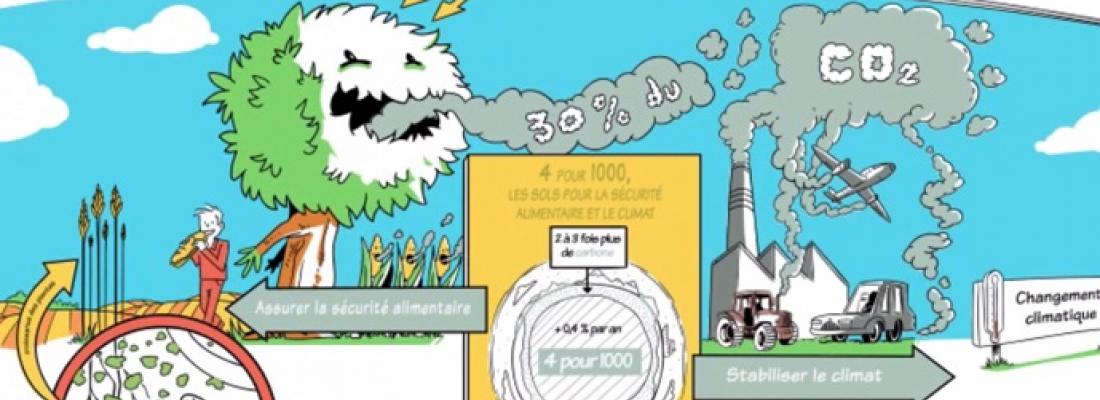Climate change and risks 4 min
Soils for food security and the climate
The "4 parts per 1000" initiative proposes to increase organic matter contents and encourage carbon sequestration in soils, through the application of appropriate farming and forestry practices.
Published on 27 November 2015 (date.last_update 13 December 2019)

Thanks to plants and living organisms, soils contain two to three times more carbon than the atmosphere. Carbon-rich soil organic matter is essential: it retains the water, nitrogen and phosphorus that are indispensable to agriculture. But alternating phases of drought and intense rainfall accentuate erosive phenomena. In the long term, almost 30 million hectares of arable land could be lost every ten years.
The solution: carbon storage
Soil degradation threatens 40% of land
If the carbon stocks in the top 40 centimetres of soil could be increased by 4 per 1000 each year, this could theoretically help to stop the current rise in the quantity of CO2 in the atmosphere, on condition that deforestation is halted.
The methods: 5 ways to develop soil management and agroecology
- Avoid leaving the soil bare in order to limit carbon losses
- Restore degraded crops, grasslands and forests
- Plant trees and legumes which fix atmospheric nitrogen in the soil
- Feed the soil with manure and composts
- Conserve and collect water at the feet of plants to favour plant growth
Applied to the surface horizon of the world's soils, or a stock of around 860 billion tonnes of carbon, the 4‰ target would result in the annual storage of 3.4 billion tonnes of soil carbon, thus counterbalancing the rise in atmospheric CO2. This measure would be extended beyond agricultural soils to most soils and their uses, including forests.
570 million farms in the world and more than 3 billion people living in rural areas could implement these practices.
The cost
For crops, 20 to 40 USD per tonne of CO2. For grasslands and forests, 50 or 80 USD per tonne of CO2.
Carbon would continue to accumulate in soils for twenty to thirty years after the introduction of good practices, if they are sustained.
